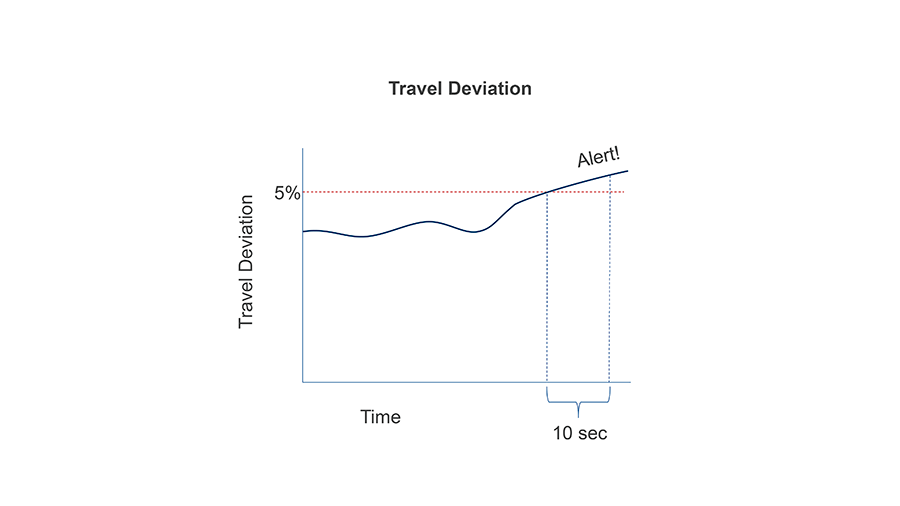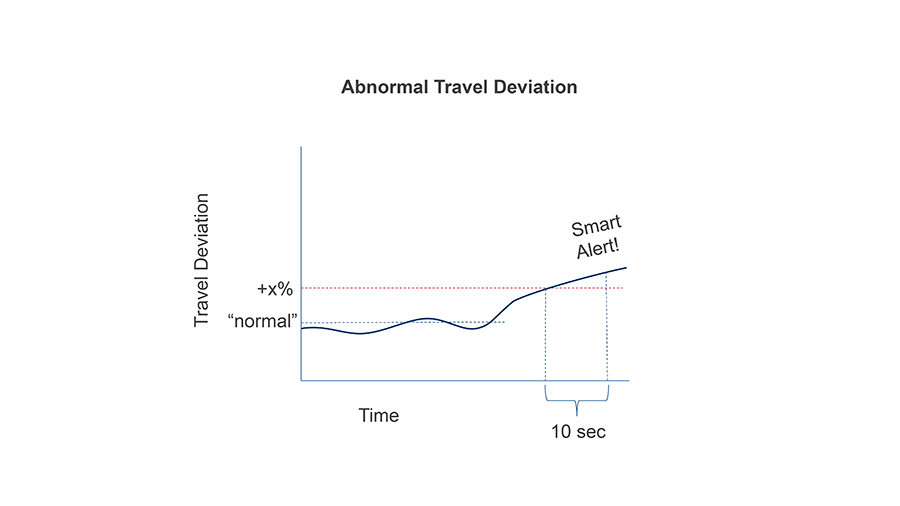- By Jaime Alvarado Millan
- November 01, 2023
- Emerson
- Feature
Summary
Many applications collect control valve operational data, and with the right software, it can be used to create value by predicting problems and suggesting solutions.

We live in a digitally connected world, surrounded by mountains of potentially valuable process data. The underlying premise is that more data equals more value, so any device or software application that gathers more data must be worth the purchase price.
Unfortunately, the reality is that data only has value if one does something with it, as data serves little purpose if it remains stored away on a hidden database, never to be seen again. Historically, the focus has been on data gathering, but new applications are entering the market that analyze that data and convert it to economic value. This article will look at one such solution for valves—a new software application that converts data into actionable information.
The migration of analytics
Data used to be difficult and expensive to obtain. Sensors were bulky and costly, and once data was obtained from them, it was difficult to transport or analyze. Not that long ago, a strip chart recorder was considered state of the art. An expensive transmitter was hooked up to a high-speed paper recorder, and the resulting miles of pen traces were then studied for insights.
Around the 1980s and into the 1990s, the price and power of electronic chips began to fall, and sensors began to shrink, stimulating a revolution of data gathering. Suddenly, diagnostic data was available that had never been present before, allowing technicians to review it and determine why something failed (Figure 1).
As information became more widely available, it enabled the technical staff to quickly identify why something failed, a technique often referred to as diagnostic analytics. That level of analysis was certainly useful because it allowed technicians to quickly troubleshoot and resolve problems. However, the data was typically captured and stored at the device level, so it could only be obtained by going into the field and downloading it locally. This was usually done after the equipment had failed and impacted production.

Starting in the late 1990s and into the 2000s, a broad host of digital communication protocols were developed and deployed. Wired HART came first, followed by the various fieldbus protocols, and then, ethernet networks became ubiquitous across industrial plants. These technologies allowed instrument data to be transmitted from the field devices via a network to host systems, where it could be more easily analyzed. Technicians could now diagnose existing problems, and they could use that continuous stream of data to predict when something was likely to fail. Diagnostic analytics has added value, but avoiding problems through predictive analytics is certainly worth much more.
The tide of electronic innovations continues to roll in, allowing equipment vendors to embed all manner of sensors into their products and creating a tsunami of data. At the same time, wireless, Bluetooth, and a host of new communication protocols make that information even easier to access. Suddenly, we find ourselves awash in data, but many are not quite sure what to do with it (Figure 2). The benefits of prescriptive, and even cognitive analytics, beckon like an island paradise, if only we can reach and enjoy it.

The inherent problem with many of today’s installations is the restriction posed by limited resources of skilled personnel. Constant and consistent analysis of collected data by experts can be used to detect a host of immediate and developing problems, but few plants have the staff to perform that work. It is possible to utilize outside resources for data monitoring, but that requires some means of securely transferring the information to that entity, and the costs can be high for monitoring an entire facility. Fortunately, a solution is now available to address these and other issues.
The next generation of data analysis
Advances in predictive analytic software, such as Emerson’s Plantweb Insight Valve Health App, have enabled a new, more cost-effective solution. Rather than depending on local or remote valve experts to monitor the data stream, specialized software running predictive analytics is used to evaluate and monitor the incoming field device data stream (Figure 3). The software is always on, looking for immediate issues but also using the historical data to spot trends, highlight developing problems, and even predict impending failures well in advance.

The analytic software is also constantly being revised and upgraded to take advantage of new data streams, incorporate equipment from multiple vendors, and employ improved analytical techniques to predict impending failures. More importantly, the application goes beyond identifying problems by offering suggested solutions on how to resolve the issue. This raises the analytics to a new level called prescriptive analytics, where problems are not only identified in advance, but corrective actions are provided. This adds further value and transforms data into true economic savings.
Unlike previous software applications, the new predictive and prescriptive analytics utilize more advanced methods to detect issues (Figure 4). Rather than simply alarming on a deviation, the software incorporates historical valve performance to create smart alerts that more accurately detect true problems and avoid false notifications.


Figure 4: Basic analytic software (top) generates an alarm on a fixed deviation after a delay. More advanced software (bottom) incorporates the historical performance of the valve to accurately identify the exact issue and suggest a solution.
Other analytical techniques monitor the performance of the valve over time, noting where it usually operates (Figure 5). The algorithms utilize that information to identify poorly specified valves that are operating near the edge of their performance curves. This information can predict long-term equipment problems, such as potential seat damage on a grossly oversized valve that is operating near 0% opening. It can also highlight valves that are constraining overall production throughput and limiting plant capacity, along with other issues.

Historical performance data is also utilized to predict when a device will ultimately fail. For instance, a valve may start sticking due to coating of process solids. By monitoring the rate of travel degradation and required increased air pressures on the actuator, the software can predict how long plant personnel have before they need to pull a valve for service, well in advance of when its performance would begin to impact the process.
The analytic software uses the existing valve data network to gather data, monitoring it for immediate and developing problems. That information is distilled into a simple dashboard that allows users to immediately gauge the health of their entire population of connected valves at a glance (Figure 6).

Problematic valves are highlighted using colors, simplifying selection of developing issues, each of which can be further investigated by selecting a valve and drilling down for more detailed information on the valve condition. Individual alerts can be chosen to obtain specific information about the problem, as well as a set of corrective actions a technician can take to address and resolve the issue.
A range of analytical options
Similar predictive and prescriptive analytic software applications have been developed for a wide range of plant equipment (Figure 7). Utilizing the same types of data networks and process instrumentation, these software applications continuously monitor process conditions to detect degraded performance.

Like the Valve Health application, these software packages can monitor equipment across the plant, highlighting immediate problems and identifying trends of degrading performance. When problems are noted, the software offers solutions to address the issues, and it also calculates a predicted time to failure for planning purposes. Many of these applications can be obtained on a subscription basis, allowing plant personnel to inexpensively test drive the software.
Data into dollars
These advanced analytic software applications convert the overwhelming wave of data into specific recommended actions to resolve problems and avoid unexpected failures, increase safety, and significantly improve process reliability. This is especially important for valves because they are often critical to plant operation, and they can degrade in performance over time due to a multitude of reasons. To learn more about this new Plantweb Insight Valve Health App, please contact your local Emerson office or Emerson Impact Partner.
All figures courtesy of Emerson
About The Author
Jaime Alvarado Millan is the Valve Health app software product manager at Emerson. He has been working for over seven years with technology companies in various B2B industries. Jamie holds a degree in Industrial Engineering from the University of Lima in Peru, an MS degree in Marketing from the Universidad del Pacifico in Peru, and an MS degree in Business from the University of Piura in Peru.
Did you enjoy this great article?
Check out our free e-newsletters to read more great articles..
Subscribe

